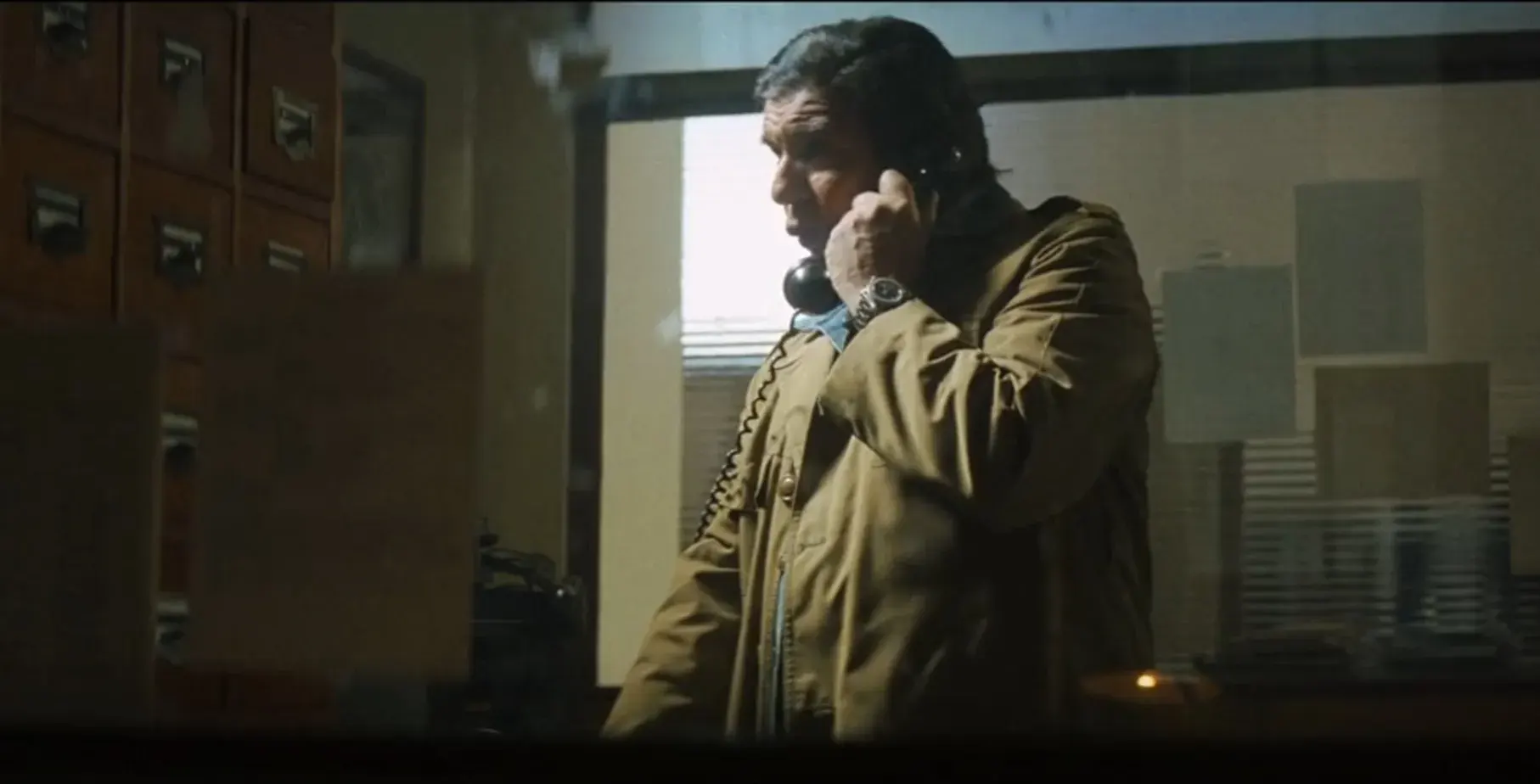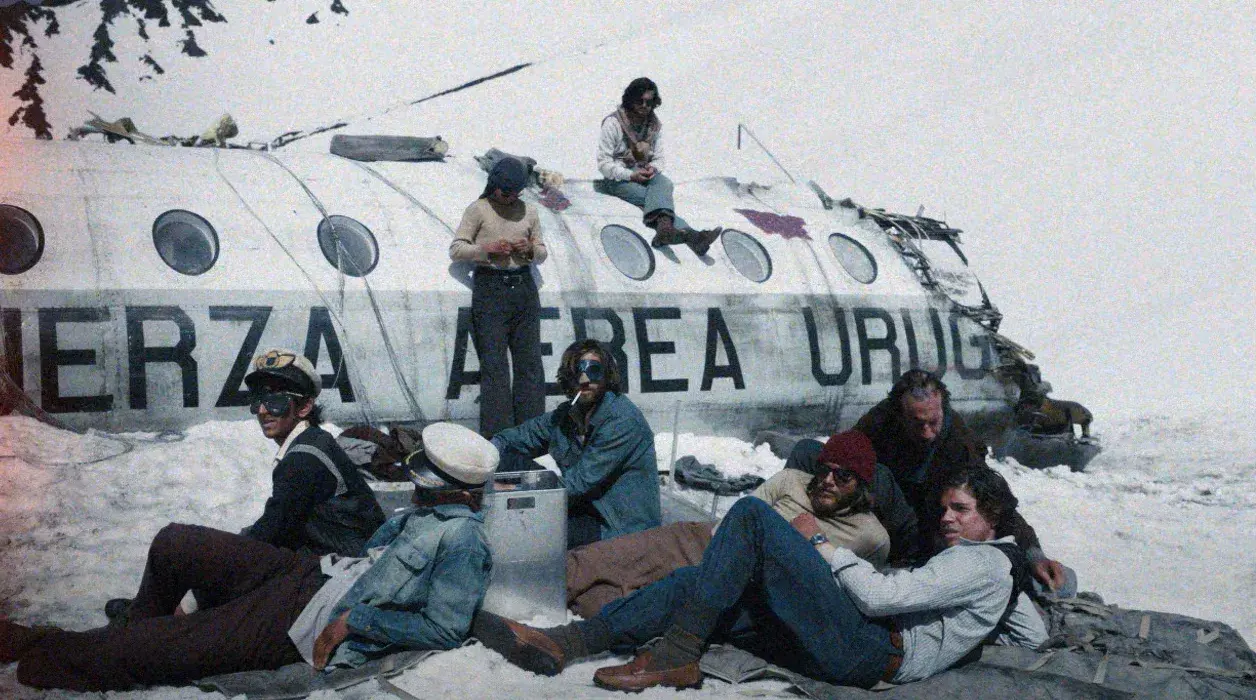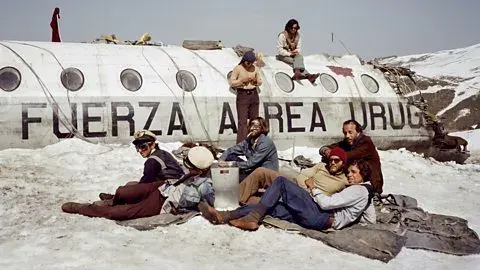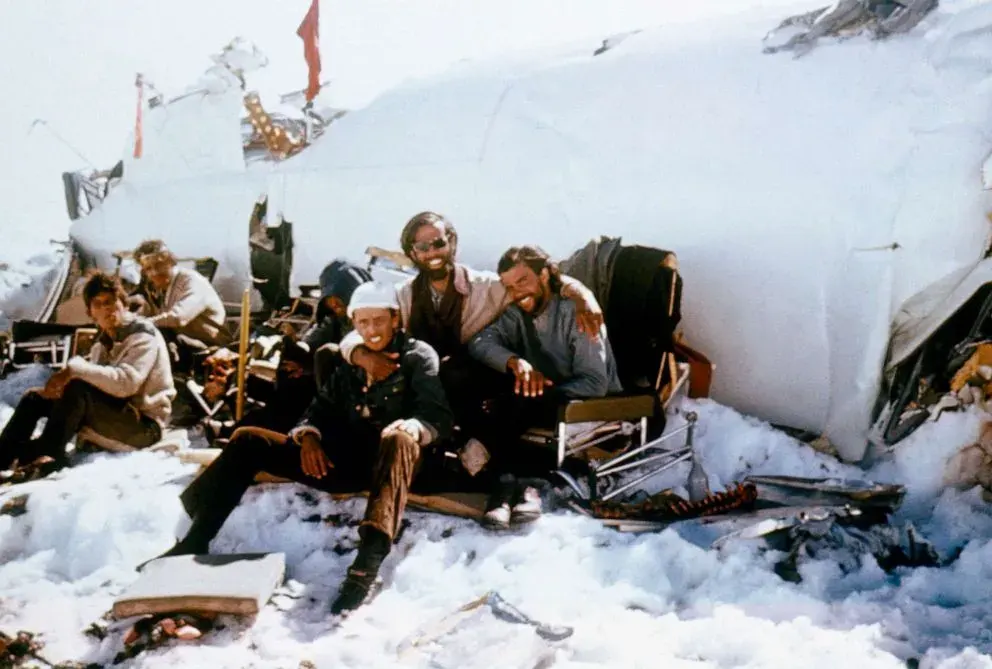Society of the Snow (Juan Antonio Bayona, 2023) Review
An extraordinary story starring ordinary people.

Nowadays, thanks to the abundance of information and the forms of media that allow us to portray stories, it is quite easy to watch, read, or listen to the testimony of people who have suffered a traumatic experience while we are safe in the comfort of our homes. Our attraction to these heart-wrenching stories dwells mainly on empathy and our thirst for emotionally compelling stories that quench our constant need to feel. They make us eager to find out how people have faced such struggles, because the more extreme they are, the more morbid curiosity they arouse in us, while we silently consider that the scenarios presented could have been our own. Moreover, we vicariously learn techniques, clues, and rationales for dealing with the situation at hand, which in many ways turns entertainment into a vaccine that also helps us gain insight into how not to fall prey to fear and anxiety.
Society of the Snow is the account of one of the most extreme survival stories ever reported. It is an adaptation of Pablo Vierci’s homonymous book, which documents the accounts of all 16 survivors of the 1972 crash of Uruguayan Air Force Flight 571 in the Andes. Such disasters are fodder for Hollywood movies, which usually try to embellish the given event with unrealistic details in order to appeal to as wide an audience as possible. Oddly enough, this project is an exception to that trend, which is even more remarkable considering that Netflix was one of the three production companies involved.
Bayona is no stranger to making movies about disasters. In 2012, he released The Impossible, about the 2004 Indian Ocean earthquake. He has been dead set on making a film about the Andean disaster ever since he began researching human catastrophes in 2008, as he mentions in the interview below with Tom Holland. In fact, the title of The Impossible comes from Pablo Vierci’s Society of the Snow1. He liked the story so much that he bought the rights to the book on the last day of filming The Impossible, although it took him 10 years to find the financing because of the level of ambition he and his team were aiming for, which included requirements such as filming in Spanish, with local actors, in the same locations and under the same conditions as the story took place1.
At this point, it’s clear that Bayona wasn’t kidding about making the film as true to the real story as possible. All the actors were in contact with the survivors and the families of the deceased, in addition to the more than 100 hours of interviews Bayona recorded with all the living survivors1. Indeed, some of their testimonies were so hard to believe that they were discarded from the first Hollywood attempt to portray the story, Alive (Frank Marshall, 1993), because the producers felt they were not credible2 (how ironic).
I can’t emphasize enough how much I respect his decision to cast Uruguayan actors, even though the film industry there is not as developed as in other South American countries. This is a huge sign of genuine respect for the original story, especially considering how easy it would have been for him to follow the Anglo-centric path that prevails in the Hollywood industry (dare I say, most of the world) and make an American blockbuster similar to The Impossible.
Given the premise and what we know so far about this bold and ambitious project, it seems poised to be a poignant and remarkable film about this pivotal event in survival history. Thankfully, Bayona has deftly harnessed that potential and meticulous attention to detail to create one of the most gripping and heartfelt films I’ve ever seen based on a true story. The constant sense of anxiety and desperation is so overwhelming and palpable that you become so immersed in it that you forget you are watching a film, which is no small feat considering I was already familiar with the story. Moreover, the palpable suffering experienced by the actors under the harsh conditions of filming adds an extra layer of believability to the portrayal.
The director could have easily succumbed to survivor bias and framed the narrative solely through the perspective of a survivor. However, he opted for a different approach by making Numa Turcatti (Enzo Vogrincic) the protagonist, who serves as both a symbol and a tribute to those who perished, as he was the last to pass away on the 60th day before the rescue. This decision, coupled with nuances such as displaying characters’ names and ages on-screen upon their demise rather than relegating them to the credits, underscores a profound respect and serves as a continual reminder of the individuality of each person involved. It reinforces the notion that without these individuals, there would be no survivors at all.
The progression of the story unfolds swiftly, gripping the audience’s attention while effectively encapsulating the key moments of the 72-day ordeal within a 144-minute timeframe, with no discernible gaps in the plot or abrupt transitions. In fact, when comparing the narrative presented in the film to the first-hand account given by Carlos Páez, one of the 16 survivors, in a podcast hosted by Jordi Wild, the similarities are striking. This convergence leads the listener to mentally replay the film while listening to Páez’s recollections.
Despite the large cast, nearly all of the characters, barring those who meet an early demise, receive ample screen time, fostering a sense of inclusion within the society depicted. Their individuality is revealed primarily through their interactions with Numa, allowing the viewer to gain insight into their personalities. These exchanges cover a diverse range of topics, particularly delving into philosophical themes such as theology, spirituality, and existentialism, which I’ll get to later. Notably, one of the standout conversations in the film occurs between Numa and Arturo Nogueira (Fernando Contigiani García—an), which I examine in the Theology section.
The characterization is believable and effectively portrays the gradual deterioration of both their mental state and physical appearance. The physical appearance of the actors closely mirrors that of the actual survivors, as evidenced by the accompanying photographs. It’s also worth noting that the actors themselves underwent weight loss in order to portray their characters authentically3.
In addition to what has already been discussed, Bayona had the nice detail of including some living survivors in the film through cameos. Here is an article listing each of the 9.

Key themes exploredKey themes explored
AnthropophagyAnthropophagy
Over the years, many people have become fixated on this particular aspect, overlooking all the other fascinating facets of the story. What they fail to grasp is that our instinct to survive transcends religious and moral considerations: it is a primal impulse ingrained in the survival mechanisms of our species, honed over millions of years. Bayona comprehends this fundamental principle and tackles such a delicate aspect without creating unrealistic situations, treating it with respect for the victims and portraying it as a strictly survival-driven response, devoid of any morbid intentions. Rather, it serves as a psychological exploration of the different approaches people adopt when faced with extreme hunger, heavily influenced by religious beliefs that come into conflict when our perception shifts under duress.
Interestingly, the narrative reframes this concept, presenting it as a form of organ donation rather than an immoral act. There are situations where living people willingly consent to others consuming their bodies, presenting it as relatively commonplace. This vision of anthropophagy in the context of the story prompts viewers to consider the importance of organ donation and its potential to save lives, to extend one’s own life somewhat in the life of another.
TheologyTheology
During the aforementioned conversation between Numa and Arturo, the latter expresses his divergence from Numa’s idea of God, stating that God tells him what to do back home, but not under these circumstances. Instead, he describes his belief in a deity embodied in tangible manifestations: the god Roberto has in his head when he treats his wounds, or the god Nando has in his legs when he keeps walking no matter what. Arturo replaces the idea of an abstract, ethereal god with the tangible presence of his companions, both living and deceased, which is a powerful message amplified by the circumstances in which it is delivered.
Rather than passively waiting for a miracle to happen, as they did until the 10th day, it’s important to take action and not rely on fate or some transcendent force to intervene on our behalf. Nevertheless, both the film and the true story don’t end in an atheistic light, as most of the survivors maintained their faith in God throughout and didn’t feel abandoned by the deity. Regardless of one’s beliefs or lack thereof, it’s crucial to back them up with proactive measures and tangible solutions, lest we become victims of our own inaction.
In addition, in a video below featuring all the living survivors, several of them assert that their survival hinged significantly on their unwavering faith in God. Interestingly, this event strengthened their belief in a higher power despite the seemingly adverse circumstances — being stranded in the Andes, resorting to cannibalism for sustenance, and being abandoned by the outside world, which ceased its search efforts after 10 days. To compound their misery, an avalanche buried them all and claimed the lives of several. No wonder the faith of the living survivors was bolstered, though I don’t think those who didn’t make it would see God in such a favorable light.
HumorHumor
It’s our emotional and physical response to certain stimuli and one of our most common reactions to a variety of situations. Laughter often occurs when a balance of opposites creates a cognitive dissonance between our expectations of reality and the actual reality. In the context of film, humor is more of a psychological defense mechanism to distract themselves from discomfort. Its therapeutic effect is obvious, as it triggers the release of endorphins, thus alleviating pain.
Carlos Páez mentions in the podcast attached above that he remembers himself as Guido (Roberto Benigni) in Life Is Beautiful. Though the film includes brief instances of humor, they are tactfully integrated with discerning judgment, ensuring that they remain authentic and unadulterated. These moments effectively depict how they dealt with the harsh reality they were going through, which feels human and relatable. It’s the realization of the old adage laugh to keep from crying.
Social psychologySocial psychology
The Society of the Snow, a term coined by the survivors themselves6, resembles a utopian interpretation of Lord of the Flies (William Golding, 1954). It’s surreal that the crash in the Andes represents real life while the aforementioned novel unfolds a fictional narrative, as the juxtaposition challenges our conventional perception of the human condition, typically viewed as individualistic and egocentric. Lord of the Flies presents a similar situation to Society of the Snow, in which people form groups with different hierarchies that end in disaster owing to their inability to cooperate toward a common goal. Conversely, the Andean incident highlights the innate human capacity for teamwork, revealing that our divisions often stem from ego. It shows how camaraderie trumps individualism in the sense that even though they were all fighting for survival, they needed each other’s knowledge and skills to ultimately achieve salvation, since division and arrogance would have only led them to their deaths faster.
No one has greater love than this, to lay down one’s life for one’s friends.
The passengers were a homogeneous group with many similarities, such as Catholic background, cultural affinity, comparable age, high level of education, familiarity with the team, adequate fitness level, same nationality, predominantly male… These common characteristics raise several questions, the first of which is: would the outcome have been the same in an alternative scenario, such as a commercial flight with people from different countries, with many parents and children struggling to survive?
It is definitely a difficult question to answer, even more so when we consider the lack of any historical events with a comparable background and outcome. In fact, this issue is addressed by the survivors themselves at 24:36 in this documentary, which I encourage you to watch in its entirety.
Nevertheless, the film leaves me wondering what kind of conflicts there were. While I understand the director’s decision to avoid sensitive situations involving the deceased out of respect for them, I still wish there had been more exploration of this aspect.
Spirituality and materialismSpirituality and materialism
While this theme is not explicitly addressed in the film, it’s definitely an important aspect to consider and a worthy reflection on today’s society. Today, there is a prevalent emphasis on materialism over spiritualism, leading to an obsession with excessive material pursuits, consumerism, and the accumulation of wealth. We dedicate countless hours to work, perpetuating the rat race, and spend our remaining time on superfluous activities that often fail to foster personal growth and merely serve as outlets for spending the hard-earned money we toil for. In this pursuit, we seem to forget capital traits such as compassion, inner peace, and detachment from material desires, which clash with what has already been established before.
The Society of the Snow contributed to helped elevate the spirits of its members by shedding social constructs and material possessions. Their relentless focus on survival engendered a tunnel vision for this singular purpose, causing them to maximize their senses to achieve such a vital goal.
In the video above at 45:38, Roberto Panessa comments that the more primitive and detached they were from human things like alcohol, sex, food, the more spiritually elevated they became, which perfectly sums up the concept of spiritual elevation through material dispossession.
ResilienceResilience
The remarkable ability of these individuals to withstand, adapt to and recover from such profoundly adverse circumstances is a master class in resilience. Although the impact on the lives of the survivors lies beyond the narrative scope of Society of the Snow, you can see in the previous video how each person has successfully moved forward, forming families and achieving professional success. What is even more incredible is that, with the exception of the deceased Javier Methol and José Luis Inciarte7, all of them are still alive today (at the time of this writing). It’s an inspiring story about facing and overcoming the most extreme situations in life through teamwork and not losing faith, regardless of your concept of God (if any).
Start by doing what is necessary, then do what is possible, and suddenly you will be achieving the impossible.
I’d like to take a moment to pay tribute to Fernando Parrado in this paragraph. Despite the devastating loss of his mother and sister on the first day, he summoned the inner strength not only to hold out until the very end, but also to embark with Roberto Canessa on a daring 10-day journey into the unknown in search of civilization. Kilometer after kilometer, with dwindling energy, they pushed on until they met the muleteer Sergio Catalán, who rode 80 kilometers on his horse to inform that the people who had supposedly died in the accident were still alive. They stand as an endless source of inspiration and constitute one of the most remarkable human achievements I’ve ever heard of.
The aftermathThe aftermath
Upon returning home from the cinema, I eagerly searched for more information to satisfy my hunger for a deeper insight into this fascinating event. Below are several compelling videos featuring authentic footage of survivors and riveting details, such as the site of the accident 50 years later.
ConclusionConclusion
Even if you are already familiar with such a cathartic narrative before seeing Society of the Snow, Bayona’s faithful and passionate portrayal won’t fail to leave you a lasting impression. It’s a milestone in filmmaking based on true events that distills respect, fascination, and sheer emotion, serving as the best possible tribute to a story that won’t cease to astonish people all over the world. It stands as a life-affirming testament to the rebellion and triumph of life over death, offering a beacon of faith in humanity, and proof that reality does indeed transcend fiction.
As a society, there is much to glean from this experience. We should be more considerate for our fellow human beings, for in the end no one is more than another, as we are all fragile organic matter in the face of such adverse situations, regardless of our status quo. Let’s cherish friendship and appreciate the simple things in life because we don’t know when or how it will end.
FootnotesFootnotes
FootnotesFootnotes
-
Ritman, Alex (September 8, 2023). “J.A. Bayona on Gaining the Trust of the Crash Survivors for Venice-Closing Real-Life Disaster Thriller ‘Society of the Snow’”. The Hollywood Reporter. ↩ ↩2 ↩3
-
Mentioned in the Jordi Wild podcast with Carlos Páez at 01:39:32. ↩
-
Sarti, Italia (January 17, 2024). “The Shocking Physical Change of the Actors for ‘The Snow Society’”. Cultura Colectiva. ↩
-
Taken from rarehistoricalphotos.com. ↩
-
Mentioned by Gustavo Zerbino (living survivor) in this interview with Enzo Vogrincic. ↩
-
“Survivors” section of the Uruguayan Air Force Flight 571 Wikipedia entry. ↩



